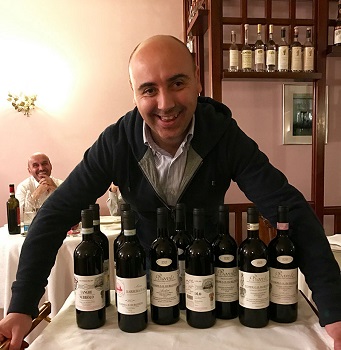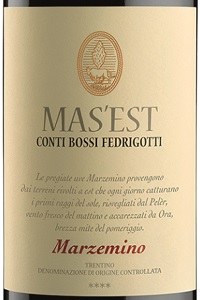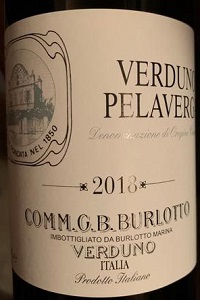From marzemino to pelaverga

From these two grape varieties we propose two wines with a favorable quality/price ratio from two extremely reliable wineries: Bossi Fedrigotti and Comm. G.B. Burlotto.
There is a lot of talk about autochthonous grapes and rightly so, at least because they define a unique viticultural panorama. For this reason today we would like to introduce two reds from grapes which are not very considered, but which are characteristic of two small appellation areas.
Marzemino is almost exclusively cultivated in Trentino, especially in Val d'Isera, near Rovereto, and in some areas of eastern Lombardy, in the provinces of Bergamo and Brescia. We present the one produced by Conti Bossi Fedrigotti of Rovereto.
Family records certify that the first harvest from their vineyards was in 1697. Since then, the Conti Bossi Fedrigotti family has continued to make wine and has also made some significant innovations. One of these was in 1961 with Fojaneghe, the first Italian Bordeaux blend. Since 2007, this historic winery has been controlled by Masi Agricola that has imposed new technical land winemaking methods. Production is based on grapes typical to the region: Marzemino, Teroldego, Traminer and Ruländer (Pinot Grigio) along with the French varietals Merlot, Cabernet, Chardonnay and Pinot Nero.
 The second grape variety we would like to introduce is Pelaverga. Rediscovered in the 1970s, it is mainly grown in the Saluzzo area, where the Colli Saluzzesi DOC exists, and in Verduno in the province of Cuneo.
The second grape variety we would like to introduce is Pelaverga. Rediscovered in the 1970s, it is mainly grown in the Saluzzo area, where the Colli Saluzzesi DOC exists, and in Verduno in the province of Cuneo.
 Trentino Marzemino Mas’Est 2019 Conti Bossi Fedrigotti
Trentino Marzemino Mas’Est 2019 Conti Bossi Fedrigotti
88/100 - € 10,00
Da uve marzemino gentile, il 30% appassisce per 40 giorni. Acciaio e, solo per il vino da uve appassite, maturazione in legno. Porpora intenso, riflessi violacei. Naso di fiori secchi, susina, mora, ciliegia e prugna. Al palato domina una verticalità salata e acida, con un finale teso di liquirizia. Corpo presente, dalla persistenza lunga ma non invadente e ben equilibrata al resto.
 Verduno Pelaverga 2018 Comm. G.B.Burlotto
Verduno Pelaverga 2018 Comm. G.B.Burlotto
92/100 - € 12,00
Da uve pelaverga piccolo. Matura 3 mesi in botti di rovere di Slavonia. Rosso chiarissimo. Un’esplosione di frutta e fiori come pochi: amarena, lamponi, fiori di campo. La bocca è leggiadra, di acidità vivissima, di tessitura setosa.

 Italiano
Italiano












